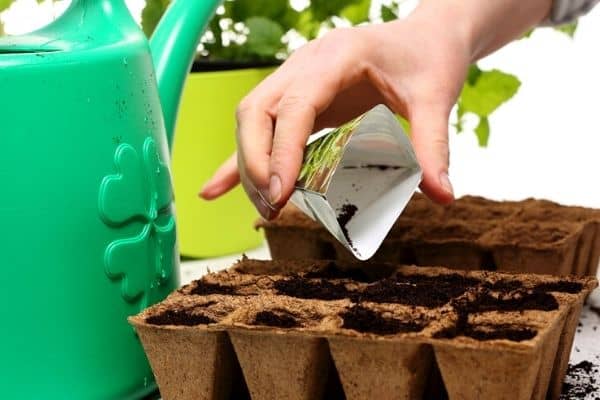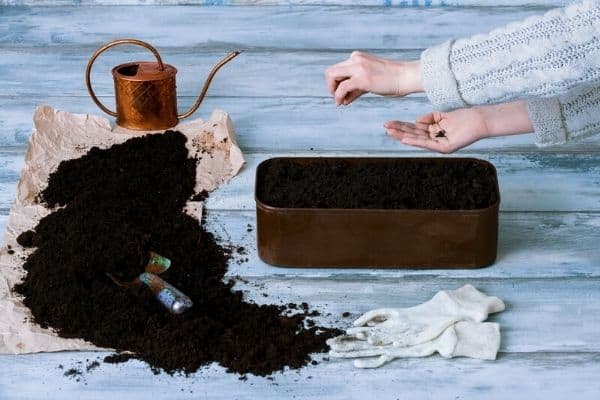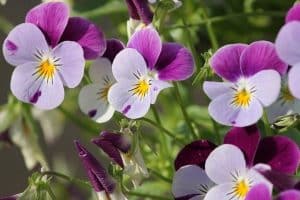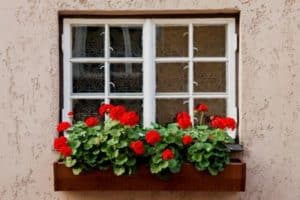Tiny flower seeds can be difficult to handle and harder to germinate than larger seeds.
Small seeds are more vulnerable to cold or hot conditions, so they need special care, especially if you’re sowing them directly in the garden.
In this article I’ll share my tips for planting small flower seeds.
This post contains affiliate links. Please read the disclosure for more info.

Some common flowers with small seeds include lobelia, impatiens, primulas, snapdragons, begonias, streptocarpus, pansies and petunias.
If you’ve avoided planting these flowers because the seeds were too tiny then this article is for you.
I’ll tell you how to handle the seeds so that they’re spaced out evenly and also how to care for them once they germinate.
I’ve had the most success planting flower seeds in seed raising trays and then transplanting them out to the garden but you can also plant them directly in the garden as long as the soil is warm and there is no risk of frost.

How to plant small flower seeds
Gently open the seed packet over a piece of white paper to catch any seeds that fall out.
Avoid planting your seeds outdoors on a windy day because strong winds can blow the seeds right out of your hand, scattering them all over the garden.
Most small seeds germinate best when placed on top of the soil and covered with a sprinkling of soil, sand, or vermiculite, but read the seed packet to check the recommended depth for planting.
It’s a good idea to wet the soil before sowing the seeds to help keep them in place.
Avoid soaking small flower seeds before planting because they’ll clump together and be even more difficult to handle.
Use a light seed raising mix rather than regular potting mix or garden soil to help to improve the germination rate when growing small seeds.
Garden soil, especially clay soil can be too dense and heavy for the small seeds to break through so you’ll have much better success with a light, fluffy seed raising mix.

Handling tiny flower seeds
The most difficult part of planting small seeds is spacing them out so they don’t end up growing in a big clump.
You can use a teaspoon to scoop a small number of seeds out of the seed packet and sprinkle them on the soil.
If you have steady hands you can also use tweezers to pick up individual seeds.
Another way to pick up individual seeds is by using a wet toothpick. Use a second toothpick or your finger to push the seed onto the soil.
Placing fine seeds in a salt shaker will help to distribute the seeds evenly in the garden bed.
You can also mix the seeds with sand to help space them out.
The last suggestion I have for spacing out tiny flower seeds is to make a seed tape.
You can use strips of toilet paper or paper towel for this.
Use a spray bottle to moisten the paper and then place the seeds at the required distance apart.
Place the strips of paper on top of the soil and gently cover them with a thin layer of soil.
The paper will decompose after planting, leaving the seed in place to sprout.
Caring for flower seedlings
Small seeds are sown close to the surface of the soil, so they dry out quickly, especially on hot or windy days.
Keep the soil moist by misting it with a spray bottle every few hours and provide some shade with a shade cloth or cloche if the garden receives full sun during the hottest part of the day.
Thin the seedlings once they develop their second set of leaves, leaving only the strongest seedlings.

RELATED ARTICLES
So there are my tips for sowing tiny flower seeds directly in the garden or in containers.
Growing flower seeds means you’ll have access to a wider variety of flowers and you can fill your garden beds and pots with an abundance of flowers for minimal cost.
Have you had success germinating small flower seeds in your garden? Let me know in the comments below.
Are you on Pinterest? I have boards dedicated to Flower Gardens and Garden Ideas that you may enjoy. You can also find me on Facebook.





